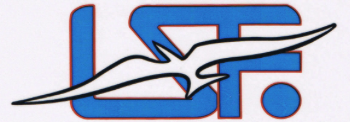The primary activities of L.O.F.T. center around thermal duration flying.
Launch, fly a timed duration, and land as close as possible to a landing spot.
The sailplane is launched using a winch (a Ford long-shaft starter motor with an attached line-drum that runs out to a turnaround bearing and then back to the launch position) or hi-start (rubber bungee with additional line attached). The moment that the plane is released from the tow (which can be seen when the parachute on the end of the line deploys after falling off the airplane’s tow hook), a timer will start a stopwatch to time the length of a flight.
In thermal duration contests, there is usually a target time set, ten minutes as an example. The object is to keep your plane aloft and clear of the ground for that 10 minutes and land at EXACTLY ten minutes to maximize your score. Points are scored for each second aloft minus a point for each second over the target time.
We also score landings. There are several different types of landing point systems, but the one we use at our contests is normally a “100 point circle” type. The goal is to land at the exact center of a circle identified by a landing tape (usually made of nylon webbing) which has been marked off with points starting at 100 near where the tape is nailed to the ground and decreasing by 1 per about 4″ or so until there’s no points to get.
A lot of times, we’ll fly “man-on-man”, which is where a group of fliers launches in a narrow window of time – almost simultaneously as far as matters. The idea is that by launching so close together, you minimize the variation in thermal conditions between rounds. The round is flown, the scores recorded, and then the scores are “normalized”. This means that the person (or persons if there’s a tie) who had the highest flight score gets 1000 points for the round. Everyone else who had a lesser flight score gets a percentage of that 1000 points based on what their recorded times were. We traditionally add landing points on top of that.
Another form of thermal duration contest involves a “ladder” system. In this approach, you start with a low flight time goal. Once you achieve that goal, you move on to a more aggressive one. This continues until the contest end-time is called. This kind of contest results in a lot of flying, which maximizes the “having fun” aspect of getting together.
One more thing to mention: thermal duration is a fundamental part of the LSF “Level” achievement program. In addition to simply achieving validates flight durations, moving up in advanced LSF Levels requires a pilot to log competition time and placements. You can check out the LSF site for more details.



